World 🢖 Asia 🢖 China 🢖 Sichuan
Spring tufa, travertine and other formations 🢔 Springs 🢔 Geological wonders 🢔 Categories of wonders
Wonder
Huanglong Valley
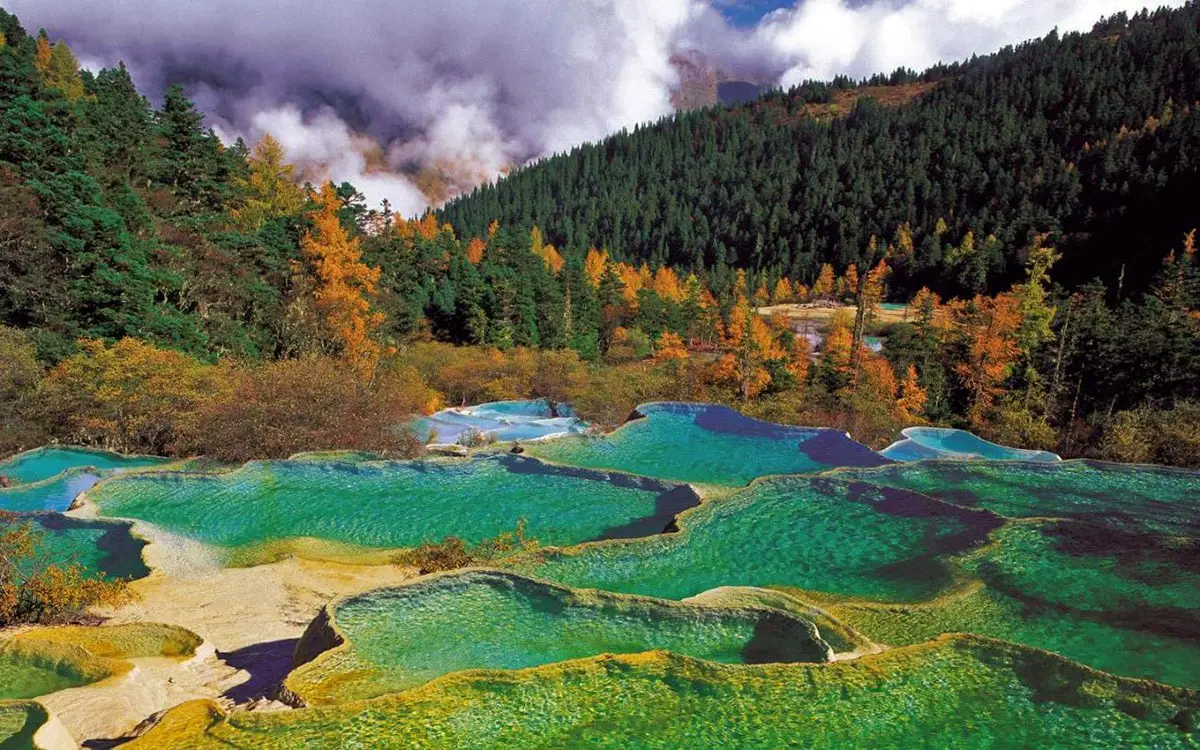
 In short
In short
There are more than 100 places in the world with beautiful travertine formations in diverse colors. The most impressive most likely is Huanglong Valley in Sichuan, China.
 55.0%
55.0%
GPS coordinates
Location, address
Name in Chinese (simplified)
Alternative names
Flow rate
Temperature of water
UNESCO World Heritage status
Map of the site
If you see this after your page is loaded completely, leafletJS files are missing.
 In detail
In detail
Location of Huanglong Valley
In the eastern part of Qinghai–Tibet plateau are found more than a dozen impressive travertine formations (2). By far the best known is the unusual and beautiful Huanglong Valley.
This area is gorgeous and comparatively pristine. The tall mountains are covered with eternal snow and in the dense forest live such rare animals as the giant panda as well as hundreds of rare and unique species of plants.
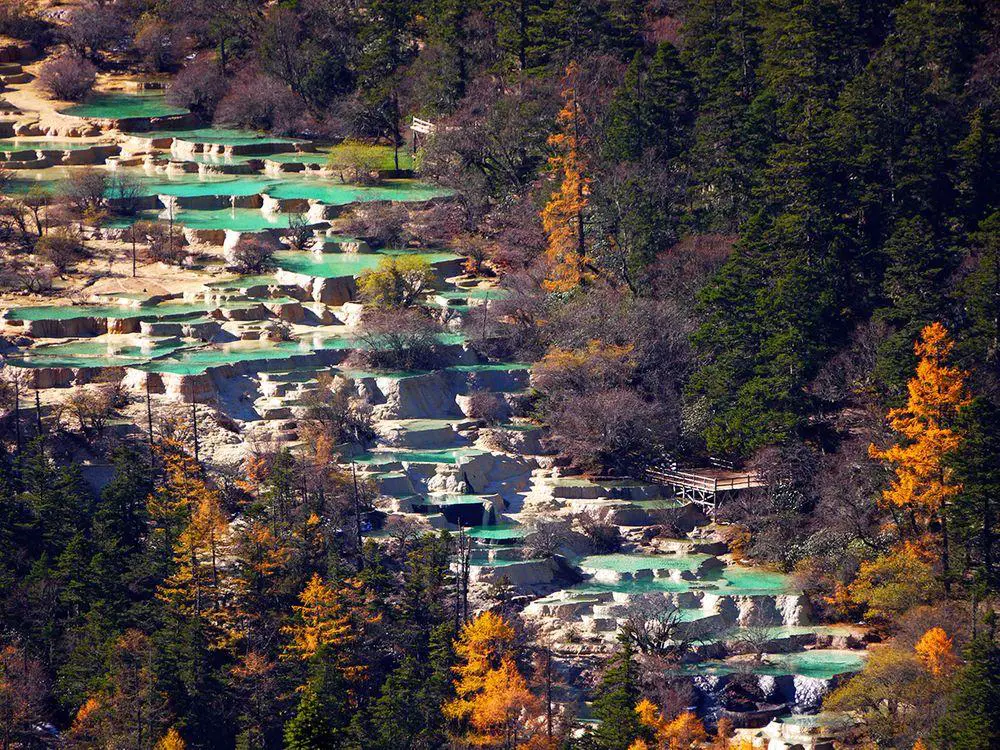
Minshan Mountains are not just a distinct ecosystem – it is an area with its own cultural values. Huanglong Valley also has its cultural values: here is located an ancient Benbo-Sec temple – a reminder of very ancient local religion, the predecessor of Buddhism.
Geology
Any travertine terraces need lots of pure limestone. Minshan Mountains are very rich with this rock and the wonder of Huanglong has formed from dissolved Carboniferous and Permian limestone.
At the height of 3650 m in the valley are located the powerful Zhuanhuachi Springs with a medium output of 96.1 l/s of water. In theory, this is thermal water because it is some 5 degrees warmer than the medium annual temperature. But… nevertheless, it is quite cold, only some 5° C “warm”.
Springwater contains dissolved carbonates and, as it reaches the air, a chemical reaction with the oxygen leads to the precipitation of limestone flocks. Thus, step by step the bright white travertine is formed on the bed of the stream. But in many locations the living world interferes in geological processes: microscopic cyanobacteria and bryophytes bring in bright yellow, green, and rusty colors.
Closer to the spring the travertine forms faster (up to 5 mm/year) than the ones which are further below (1).
Size
Huanglong travertine formations are very long: 3.63 km, the height difference is 530 m. Thus a walk from one side to another and then back is not that easy. The thickness of travertine formations varies from 9 to more than 20 meters (2).
Description
Huanglong Valley is very diverse, with many unusual features. Here are thousands of small rimstone pools with countless smaller and larger waterfalls between them as well as golden-colored travertine shoals, walls, large waterfalls, caves.
As the visitors walk upwards along the winding pathway, one after another come the following natural wonders:
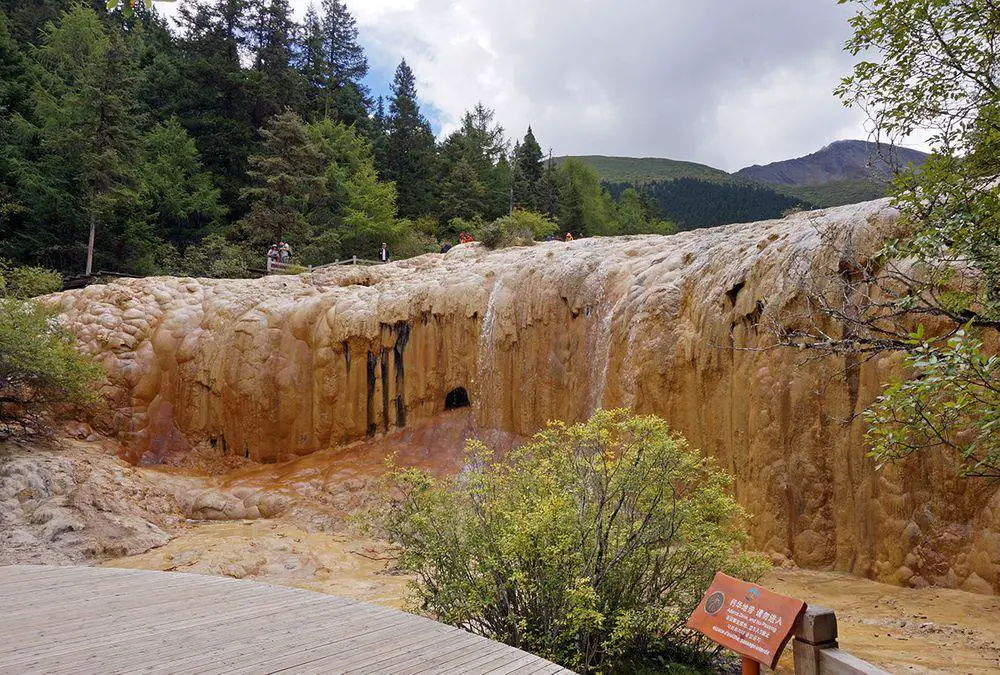
- Guests Welcome Pond (Yingbin Chi) – the first point of interest, impressive system of some 350 smaller travertine ponds. It by itself is world-class landmark, but there comes a lot more!
- Glowing Waterfall (Feipu Liuhui) – impressive, wide travertine waterfall which is 14 m tall and 68 m wide. Water falls along the rugged rim of the pool in countless trickles. The sound of numerous waterfalls is somewhat weird;
- Lianyan Pool – Extensive pond with lucid water, algae and waterplants in it;
- Flying Waterfall on Lotus Platform – up to 19 m wide and 45 m tall waterfall with multiple cascades among the beautiful travertine formations;
- Washing the Body Cave – small cave in the travertine which is adorned with bright white and yellow stalactites and stalagmites. Cave hides behind a curtain of falling water. It has been a sacred place since prehistoric times. According to local legends monk of Benbo cult was bathing here every day and eventually became immortal. Now it is visited by woman who believe that this holy site will help them to become fertile;
- Golden Sand Pavement (Jinsha Pudi) – this is an amazing landmark indeed: 1300 m long section of golden-colored travertine shoal which consists of countless smaller terraces. This part of Huanglong resembles the skin of some imaginary golden dragon. It rises per some 100 m. This might be the largest travertine shoal in the world;
-

Golden Sand Pavement in Huanglong Valley / Ken Marshall, Flickr / CC BY 2.0 Bonsai Pond (Pen Jing) – next to the Golden Sand Pavement has formed a system of 330 travertine pools. Visitors have risen to a significant height and beautiful mountain scenery is mirroring in the unusual pools which are surrounded by scenic plants – flowers, shrubs, small trees;
- Mirror Pond – system of some 180 travertine pools next, to the east from the Golden Sand Pavement;
- Azalea Pond (Suoluo Pond) – group of some 400 travertine pools above the Golden Sand Pavement. Around these ponds are growing numerous species of azaleas;
- Flamboyant Pond – very impressive group of 658 pools next to the Azalea Pond;
- Huanglong Middle Temple (Buddha Hall) – located approximately in the middle of Huanglong. Here for approximately 1 km follows somewhat less interesting walk – although with gorgeous mountain scenery;
- Huanglong Ancient Temple – this temple is located close to the Huanglong spring, below the uppermost complex of travertine terraces. Temple was built in the second half of the 14th century. According to local legends, this temple was built to honor the legendary dragon who helped the king of the Xia Kingdom. The dragon managed to save the kingdom from the flood by channeling the streams into countless ponds;
- Multi-Colored Pond (Wucai Chi) – the uppermost system of travertine ponds at the springs which have formed the wonder of Huanglong. Here are 693 ponds. Visitors who have managed to ascend all the 350 m are rewarded with unique scenery: gorgeous, multicolored travertine ponds, ancient temple, and snow-capped Minshan mountains.
-
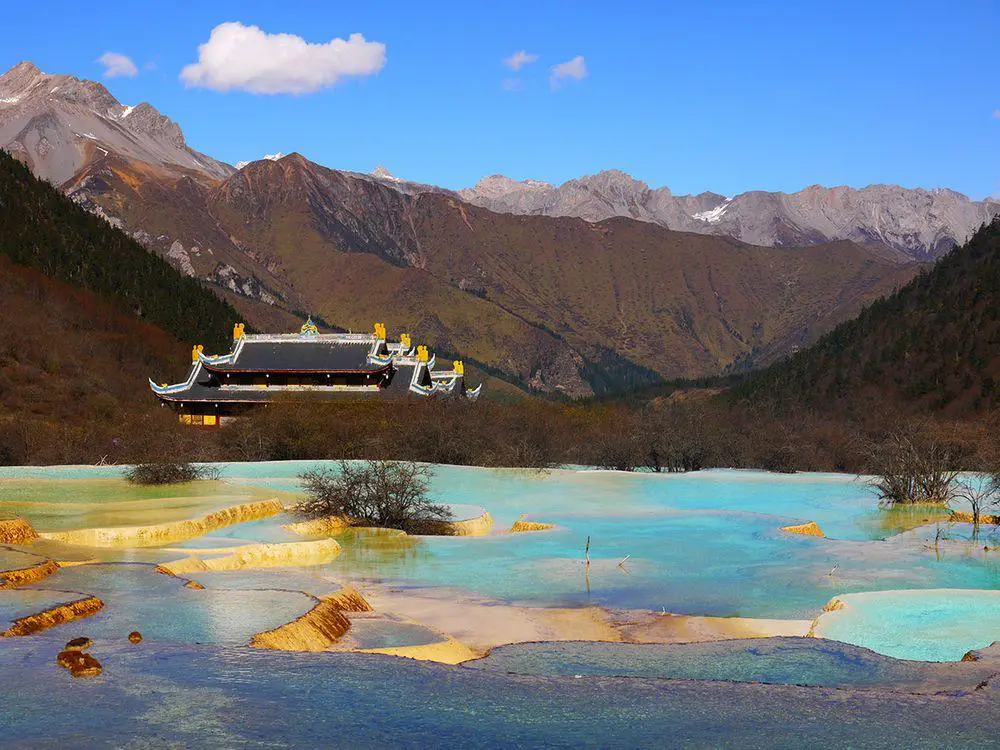
Multicolored Pond and Huanglong Temple / Culantor Lin, Flickr / CC BY-SA 2.0 Stone Pagoda in the Pond (Shita Yuchi) – two small stone pagodas in one of the ponds – burials of ancient general from the times of the Tang dynasty (7th – 10th century). Pagodas were built several centuries later and are almost totally covered with travertine. Only the spires are still seen. Thus the remnants of buried people are sealed and no one knows for sure – who lies there.
- Zhuanhuachi Springs – these are the springs which have formed the wonder of Huanglong. Further down there are more springs but these ones are the most powerful (96.1 l/s).
Huanglong has a special beauty in each season. Unusual is the winter scenery, especially if the trees are covered with bright white frost. The blue-green and yellow colors of the ponds make an impressive contrast to the black and white scenery.
To access the valley one should buy a ticket. It is fairly expensive but nevertheless, the valley is full of visitors who come to admire the unique beauty of this amazing place.
References
- Haijing Wang, Zaihua Liu, Jinliu Zhang, Hailong Sun, Dejun An, Ruxian Fu & Xiaoping Wang, Spatial and Temporal Hydrochemical Variations of the Spring-fed Travertine-depositing Stream in the Huanglong Ravine, Sichuan, SW China. Acta Carsologica 39/2 – 2010. Accessed on the 20th December 2016.
- G. Lua,b, C. Zhenga, R.J. Donahoea, W. Berry Lyonsa. Controlling processes in a CaCO3 precipitating stream in Huanglong Natural Scenic District, Sichuan, China. Journal of Hydrology 230 (2000) 34–54.
 Linked articles
Linked articles

Wonders of China
China has got it all – more than one billion people, a large area, a great and very long history, very distinct and at the same time – very diverse cultures, great and varied nature.
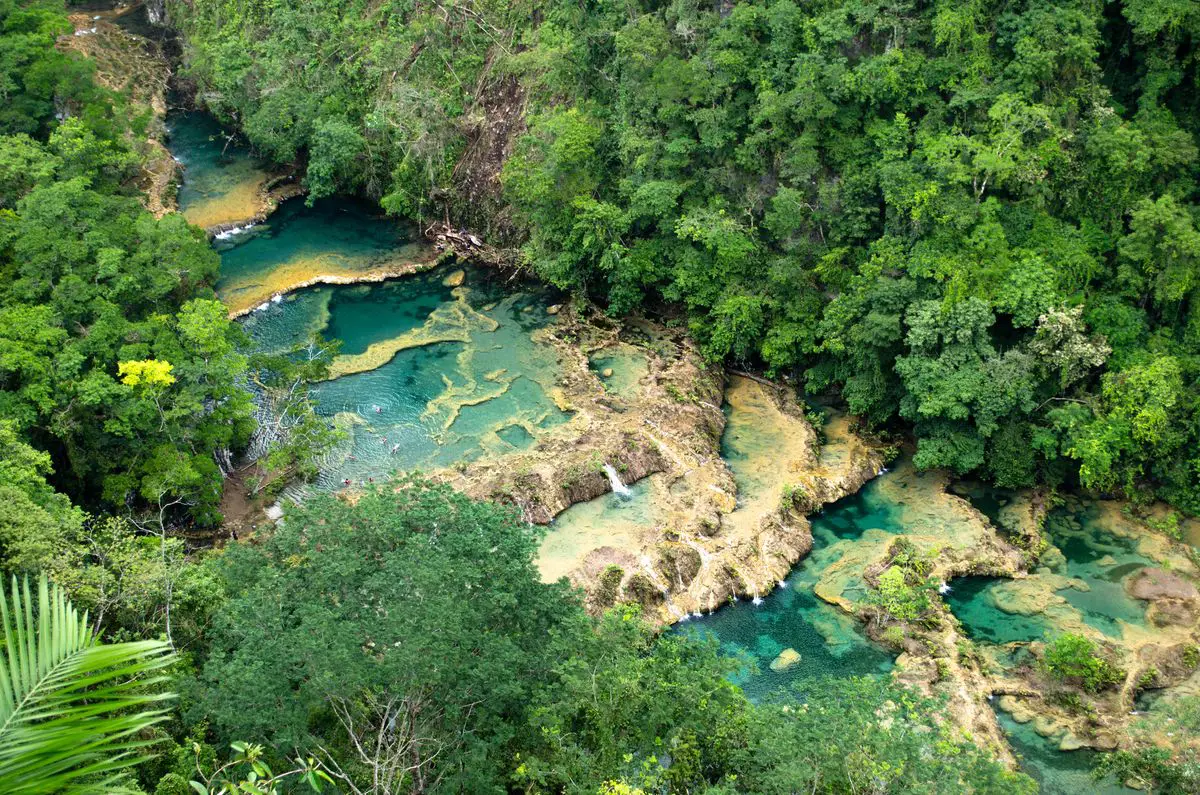
Spring tufa, travertine, and other formations
This category includes very diverse landmarks that have one thing in common: all of them are created by springs that are depositing chemical sediments – silica, carbonates, salt, or other chemical compounds.
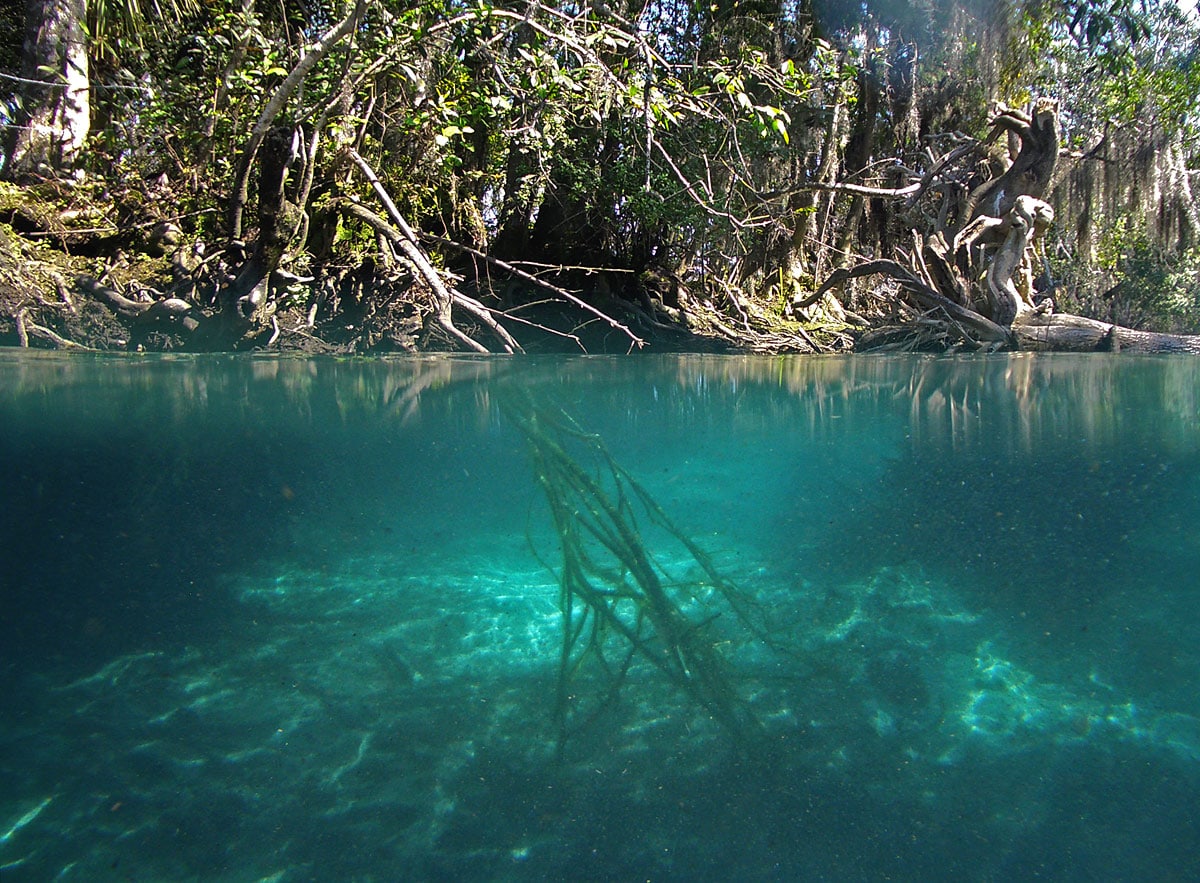
Springs
Powerful natural freshwater springs belong to the most fascinating monuments of nature. Even more exciting is the diversity of unusual springs – mineral springs, hot springs, submarine springs as well as the unusual black smokers. Especially beautiful are such natural rarities as travertine, silica, or salt terraces created by warm and hot springs and, especially, geysers.
 Recommended books
Recommended books
Ancient Sichuan: Treasures from a Lost Civilization
This extraordinary catalog accompanies a major traveling exhibition of 128 works of bronze, jade, and clay dating from the thirteenth century B.C. to the second century A.D. The majority of these stunningly sophisticated works of art–among the most unusual and spectacular produced anywhere in the ancient world–all come from a startling archaeological discovery made just fourteen years ago at the previously unknown site of Sanxingdui in Sichuan province.
Thermal Springs and Geothermal Energy in the Qinghai-Tibetan Plateau and the Surroundings
This book introduces readers to the rich and varied thermal springs of the Tibetan Plateau, which is steadily rising due to the collision of two continental plates. Readers will discover a wealth of information on boiling springs and hot springs, including their location and elevation, temperature, geological characteristics, and water chemistry data, as well as tables on warm and tepid springs.


